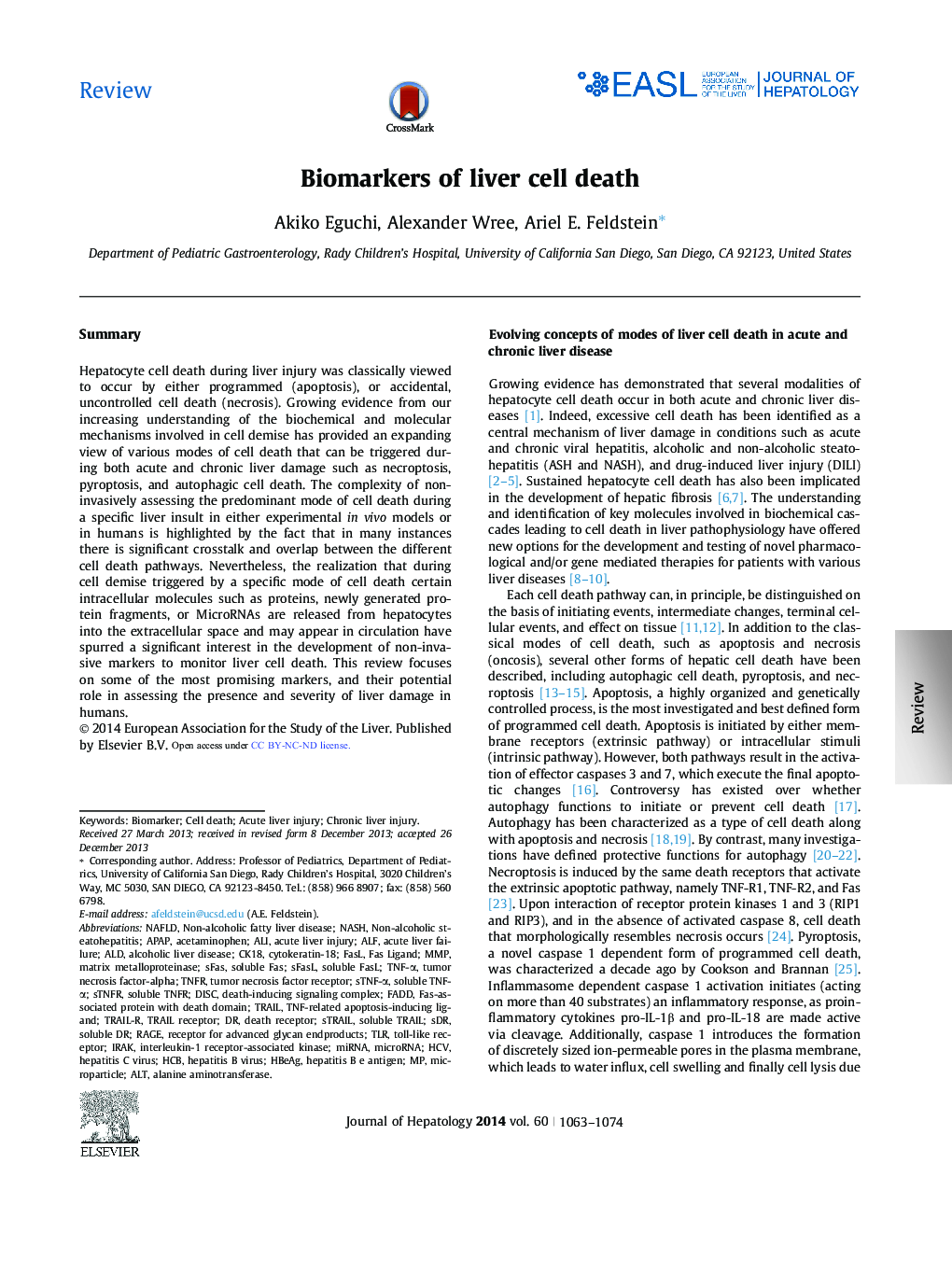| کد مقاله | کد نشریه | سال انتشار | مقاله انگلیسی | نسخه تمام متن |
|---|---|---|---|---|
| 6103614 | 1211130 | 2014 | 12 صفحه PDF | دانلود رایگان |
SummaryHepatocyte cell death during liver injury was classically viewed to occur by either programmed (apoptosis), or accidental, uncontrolled cell death (necrosis). Growing evidence from our increasing understanding of the biochemical and molecular mechanisms involved in cell demise has provided an expanding view of various modes of cell death that can be triggered during both acute and chronic liver damage such as necroptosis, pyroptosis, and autophagic cell death. The complexity of non-invasively assessing the predominant mode of cell death during a specific liver insult in either experimental in vivo models or in humans is highlighted by the fact that in many instances there is significant crosstalk and overlap between the different cell death pathways. Nevertheless, the realization that during cell demise triggered by a specific mode of cell death certain intracellular molecules such as proteins, newly generated protein fragments, or MicroRNAs are released from hepatocytes into the extracellular space and may appear in circulation have spurred a significant interest in the development of non-invasive markers to monitor liver cell death. This review focuses on some of the most promising markers, and their potential role in assessing the presence and severity of liver damage in humans.
Journal: Journal of Hepatology - Volume 60, Issue 5, May 2014, Pages 1063-1074
